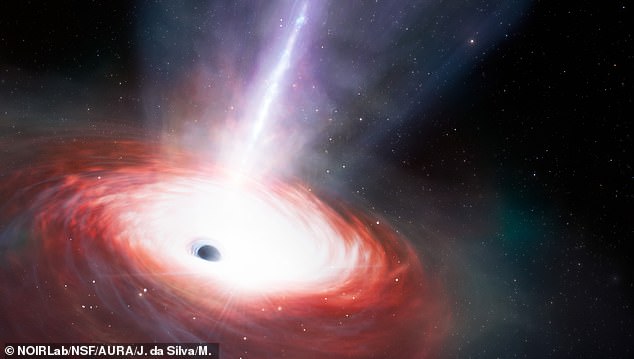
Rogue Black Hole Adrift in Milky Way Baffles Scientists with Missing Companion Star
Lone Black Hole Discovered Drifting Through Milky Way
Scientists have detected a solitary black hole, seven times the Sun’s mass, drifting 5,000 light-years away in Sagittarius. Unlike most black holes found via companion stars, this one relied on a rare "gravitational lensing" effect—a first for isolated black holes.

Artist’s impression of the lone black hole warping spacetime (Credit: Daily Mail)
How It Was Found
Black holes are invisible, but their gravity bends light from distant stars. Astronomers observed subtle star position shifts over a decade, using the Hubble Space Telescope and Gaia satellite. This “lensing” effect confirmed the black hole’s presence without a star companion.
Einstein’s Legacy
Gravitational lensing, predicted by Einstein’s relativity theory, occurs when massive objects warp spacetime. “Einstein did it again—black holes hide themselves but not their gravity,” said Dr. Martin Dominik, lead researcher.

Diagram showing gravitational lensing effect (Credit: Daily Mail)
Neutron Star Debate
Initially, some scientists argued the object might be a neutron star. However, follow-up data showed no emitted light, confirming it’s a black hole. The team’s findings, published in The Astrophysical Journal, mark a milestone in astrophysics.
Why Lone Black Hole Discoveries Are Rare
Most black holes are detected via interactions with orbiting stars. Isolated ones require a rare cosmic alignment. While theories suggest 100 million black holes exist in the Milky Way, this is the first lone one observed.
Birth and Speed Clues
The black hole moves at 114,000 mph—faster than nearby stars. Researchers believe it gained speed from an asymmetrical supernova explosion during formation, dubbed a “natal kick.”

Star positions shifted by the black hole’s gravity (Credit: Daily Mail)
Future Discoveries
Upcoming telescopes, like NASA’s Nancy Grace Roman Space Telescope (launching 2027), could uncover more lone black holes. This discovery opens new avenues for studying these enigmatic objects and their role in galaxy evolution.
Key Takeaways
- First isolated black hole found via gravitational lensing.
- Mass: 7x Sun’s mass; Speed: 114,000 mph.
- Confirms Einstein’s predictions, advances dark object research.

Hubble Telescope data was crucial for the discovery (Credit: Daily Mail)
This breakthrough highlights the power of gravitational lensing and humanity’s growing ability to uncover the universe’s hidden giants.


